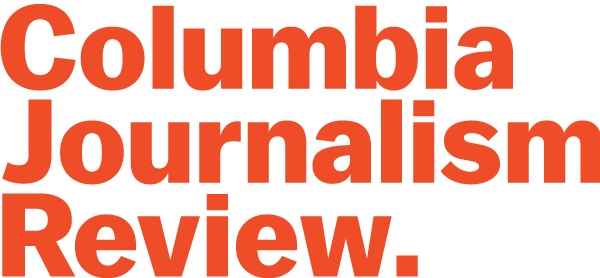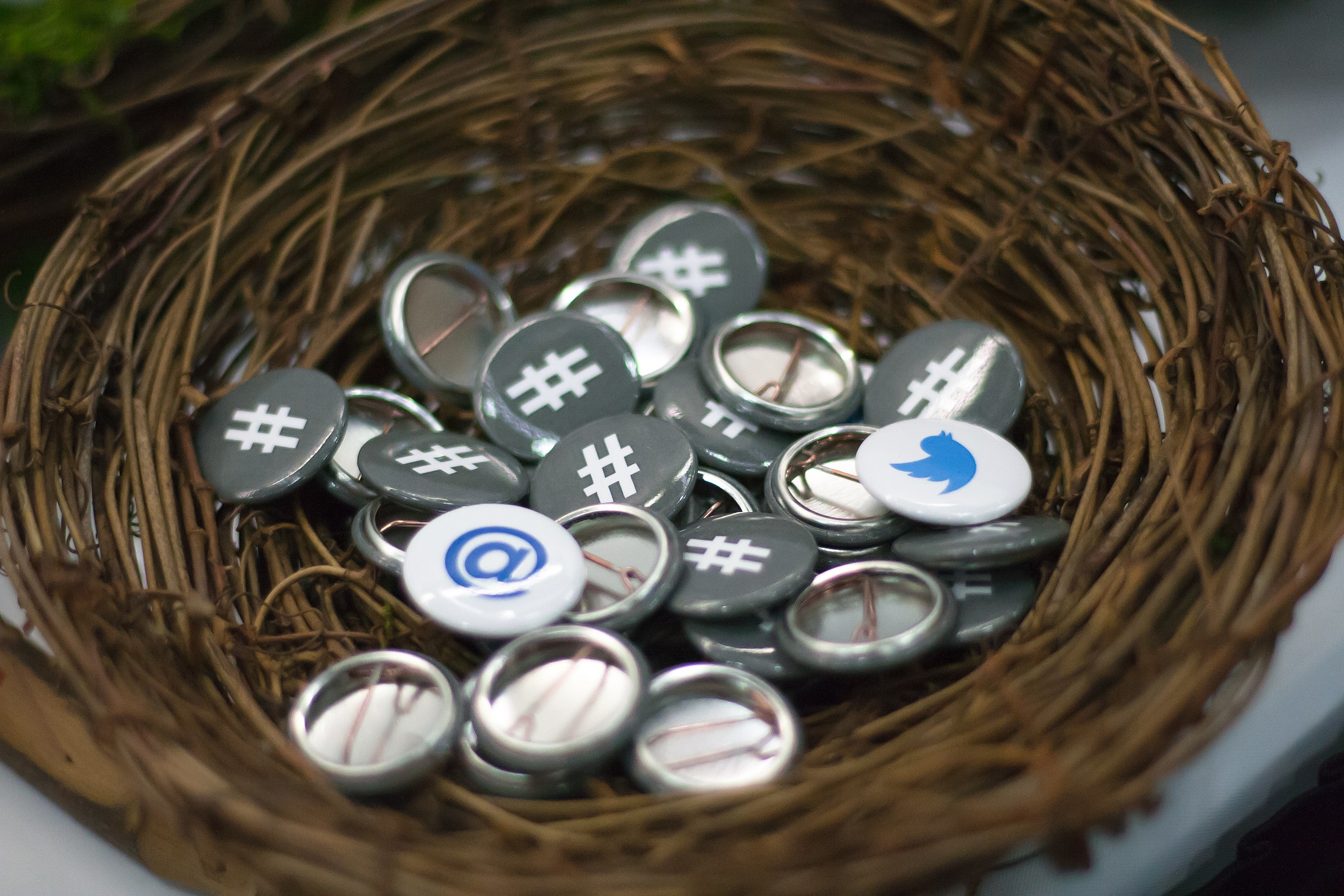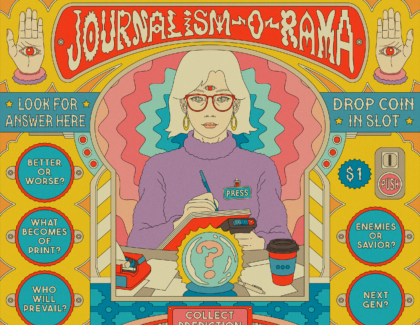Sign up for the daily CJR newsletter.
Among the billionaires in attendance at Donald Trump’s inauguration were Elon Musk, the owner of X; Mark Zuckerberg, the CEO of Meta; and Sundar Pichai, the CEO of Google, which also owns YouTube. Their presence starkly illustrated a concern that many social media critics have echoed for some time: these companies, as key as they are to our social infrastructure, are also at the whims of their leaders. Musk is, at the moment, the most emboldened of these billionaires. Upon entering office, Trump entrusted him with running the so-called Department of Government Efficiency, through which Musk has been given permission to eliminate the jobs of thousands of government workers—a repeat of his takeover of X, in 2022, after which he laid off almost 80 percent of the workforce. In the weeks that followed, Musk was rarely absent from the news cycle, apparently relishing every memeable moment, whether that entailed deploying slurs against astronauts on his platform or brandishing a chainsaw onstage at the Conservative Political Action Conference.
This state of affairs can be doom-inspiring—but a group of technologists, researchers, and other concerned social media users are treating it as the impetus to argue that alternatives should be explored expeditiously. One result has been Free Our Feeds, an initiative to raise money to open up the AT protocol—an open-source technology that provides the tools for users to create different and interoperable apps—that undergirds Bluesky, a social platform that many see as an alternative to X. “It really is about figuring out how, as people who are not necessarily engineers in powerful companies, we can have a say in how technology works in the public interest,” Robin Berjon, a tech custodian of Free Our Feeds, said. Berjon—who worked on data governance at the New York Times for several years and is now the deputy director of the IPFS Foundation, a nonprofit that stewards another open network—heard about Free Our Feeds and jumped on board. “It’s not every day that you can get people to talk about infrastructure,” he said, “as important as it is.”
The campaign has since attracted the attention of celebrities and tech watchers like Cory Doctorow, who coined the term “enshittification” to refer to the deterioration of tech platforms that we all use. Over the next three years, Free Our Feeds aims to raise thirty million dollars toward its goal of setting up a foundation to oversee the transformation of Bluesky’s AT protocol into a public social ecosystem. Recently, I spoke with Berjon about what this could look like, what it could mean for journalists, and how he thinks the media is covering alternatives to big tech platforms. Our conversation has been edited for length and clarity.
FM: How would you describe this current moment for the major social media platforms that we use, the people who control them, and the start of Donald Trump’s second presidency?
RB: If you don’t mind me taking just a very small step back, I think we’ve fallen into the trap of describing legacy social media as the public square, and the truth is, there’s never been anything “public” about it: It’s been privately owned, privately governed, privately operated for a long time—and not just private as in the local mom-and-pop store, but by very powerful companies with clear agendas of continuously expanded control. What’s happening now politically in the US and in many other countries around the world is the logical conclusion of that mistake. We’ve essentially privatized the governance of critical social infrastructure, so we cannot be surprised that, once that power over infrastructure becomes concentrated and has no checks and balances, it’s used in favor of the people who operate it. Those people have had essentially techno-authoritarian preferences for a long time. They’ve rarely been shy about it; we’ve seen it in how those platforms operated, even before the current moment. It’s just the continuation of what we’ve seen before.
Are you hopeful about getting through to people who more or less accept the general toxicity in our social media systems?
I think one thing that’s very special about this moment is that the migration away from legacy social media is not being driven primarily by activists and civil society people who’ve been concerned about it for a long time. Like, I’m a technologist—of course I’ve known about these problems for a long time. But now I’m getting people who have not cared about this, ever, coming to me and asking what they should do, where they should go, how they should change. And not just because of the news; of course, the news is definitely creating a moment around this, but also a lot of people are telling me that, for instance, Instagram, which they treated as a platform [where they could go] to relax and see pretty things, is becoming the same kind of far-right hellscape as Twitter. They’re feeling that they are continuously exposed to content that they don’t want to go online for.
Similarly, I’ve had a number of artists reach out, especially [about] the Free Our Feeds project, and they’ll say the same thing—that they initially used these platforms, particularly Instagram, as a way of getting their creations out there and finding people interested in what they do, but also for themselves, and that these platforms are completely failing them because their owners are only interested in advancing their own political agendas. What’s interesting is that this is very much regular people who are unhappy with social media and are no longer willing to put up with a certain level of toxicity.
What is Free Our Feeds’ plan to address this?
At this stage of Free Our Feeds, we’re basically just a campaign to raise money to start a foundation. We have to get to the point at which we’re sufficiently funded to make the system work. But once we get to [fund a] nonprofit, we can really start operating independent infrastructure. It’s hard to talk to people about infrastructure without their eyes starting to glaze over. But really, the way to think about it is to imagine the road system entirely belongs to this one billionaire; because roads are hard to replace, because they are used for many different things, and because you don’t really have an alternative to using the road, if you need to drive somewhere or transport merchandise, then whoever operates it has a lot of power over transit. And so the billionaire could impose arbitrary taxes, exactly like we’re seeing with Apple’s and Google’s app stores, where they take 30 percent of [app makers’] revenue just because they can. Or they could come up with their own governance rules. Continuing with this metaphor, what we’re doing is we’re making sure that these new protocols remain open, just like an open road.
What could that look like when this sort of public system is up and running? How do you visualize it?
Ideally, from an end user’s perspective, once it’s up and running you will see no difference whatsoever, because infrastructure, when it works, is invisible. Most people, when you walk into a room and flip the light switch on, don’t worry about whether the power company and the electrical grid are functioning. But the impact that it will have on people’s lives to have open public-interest infrastructure in the digital sphere is that you won’t ever have to switch social media ever again. It basically provides long-term, lifelong, sustainable protection against enshittification, and it makes sure that the system remains competitive so that you have a wide offering of options but you don’t need to register with a new system to create a new account: you don’t need to restart your entire network of followers; you can keep your data, keep your identity. And as social media changes over time and becomes more innovative, you can just keep using the same foundations and moving from place to place without ever having to worry about creating a new account and moving anything over.
In this landscape, will there still be companies like X, TikTok, and Instagram?
I think so, yes, because it’s important to detach the low-level infrastructure that we’re concerned about—and that we want to make work so that other people don’t have to worry about it—from the product offering that exists on top of them. So Bluesky is just one service on top of the ad protocol: that will be one of the services that maybe you use, but if you’re not interested in microblogging, maybe you won’t. Maybe you’ll use Flashes, which is the Instagram analogue on the AT protocol.
This makes me think of subgroups on social media—like how Reddit has subreddits, Twitter has Black Twitter, and TikTok has any number of “toks” that are communities unto themselves. Would opening up the protocol essentially let people take these things off these platforms?
Instead of having a community that is doing its own thing, but with the same rules as the rest of the platform, you can have a community that builds its own rules on top of it, and makes it work differently based on its own preferences. You mentioned Black Twitter—but people there had to basically work according to Twitter’s decisions in terms of content moderation and so on. There’s something on Bluesky called Blacksky, and that actually works differently from the rest of Bluesky because it has its own specific recommendation feeds and its own specific moderation system. It was built by Rudy Fraser, who’s an early adopter of Bluesky, but it shows the kind of thing you can build on these open platforms. Bluesky did not give him permission to build that; he was just like, Okay, well, I’m gonna build it, and people started using it. I think this power to shape how the system works, instead of just using it with your community, is really transformative.
What could this alternative way of doing social media mean for journalists?
In an ideal world, I would like the answer to that question to come from media organizations and from journalists. Over the past fifteen years, we’ve become completely accustomed to this idea that when we want something to change in social media, anywhere in tech, we have to beg a powerful company to make that change for us. Computers are meant to be things with which you can build your own systems. And these new social media protocols basically make that possible again. There’s a huge potential in what these platforms can bring to media. For instance, you could build a competitor to Apple News on the AT protocol, and the value you get is that you immediately have tens of millions of users who are already there and a lot of infrastructure that’s already operated for you. So the cost of doing that is much lower, and the opportunity to gain from network effects is huge.
Do you have thoughts on how journalists are covering these social media alternatives?
I think it’s very tricky. I’m not gonna name names, but there are a number of writers, whose work I deeply respect, who I see struggle to present these new alternatives. And I think the reason for that is primarily because the way things have worked for most of their career, at least the past fifteen years, doesn’t prepare them to properly explain these things. In their defense, even if they understand, it’s a lot of work to make that clear to their readers. I see a lot of coverage of Bluesky and the AT protocol as if it were just one product, instead of an entire protocol. And I’ve seen descriptions of protocols in mainstream newspapers that are really, really bad and confusing. I’m not a journalist, but personally, I always try to compare technical systems as I understand them to pre-internet systems, because I think the correspondences are much stronger than people realize. That’s why I talk about infrastructure in terms of roads, and the ability to have a choice of feeds in terms of media pluralism. But I understand it’s hard. It’s going to take a while before there’s this widespread understanding of this that makes it easier to talk about it.
Has America ever needed a media defender more than now? Help us by joining CJR today.







